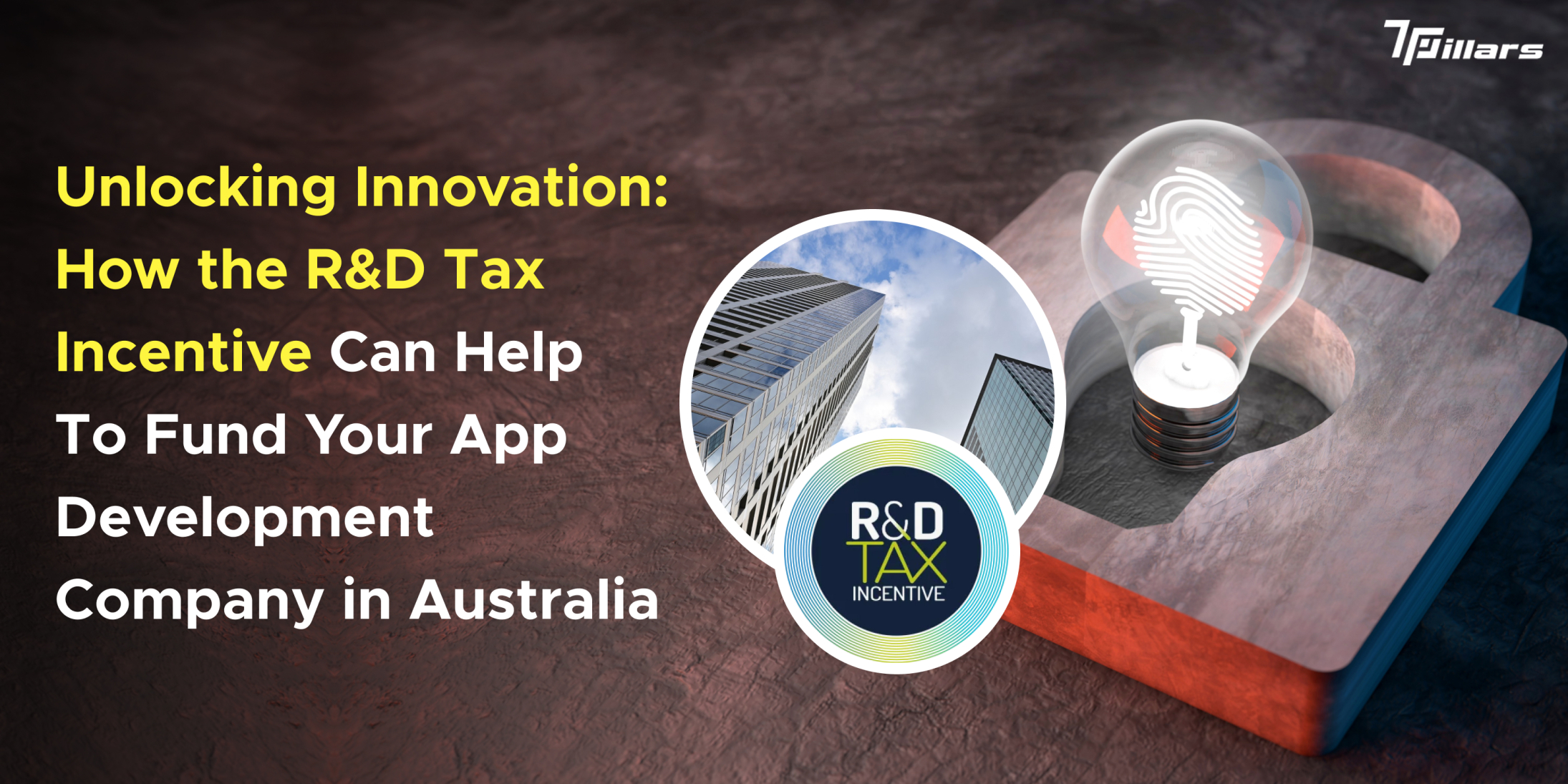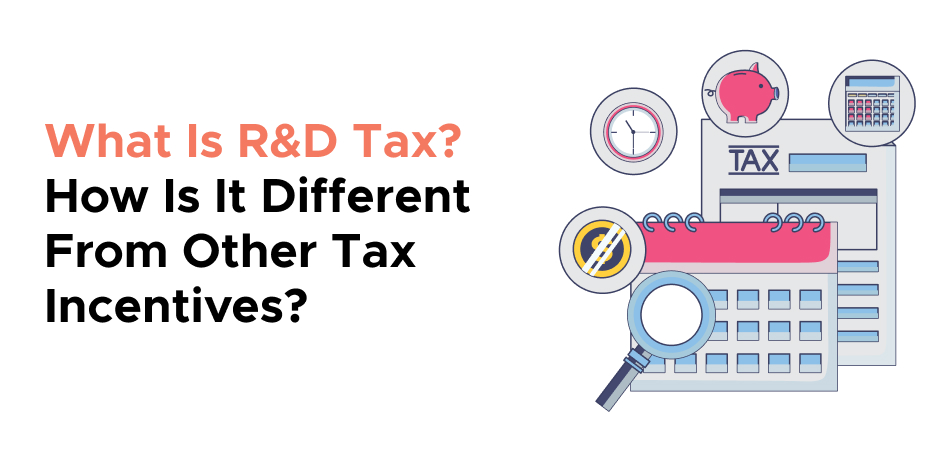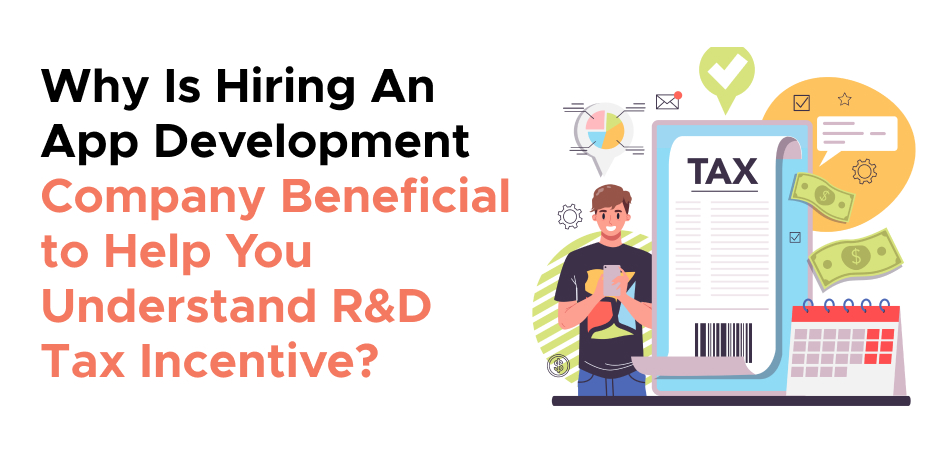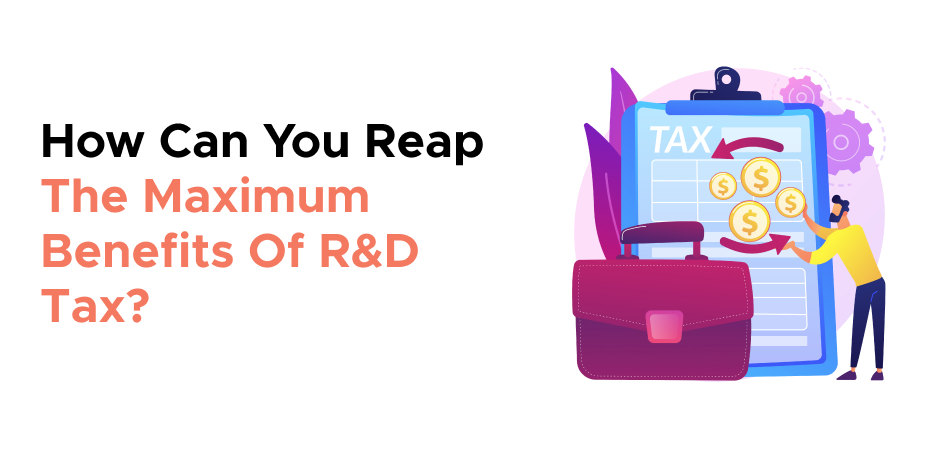31 Jan 2025
Unlocking Innovation: How the R&D Tax Incentive Can Help To Fund Your Mobile App Development Company in Australia
Shaun Bell

Application development has surprisingly emerged as indispensable in the modern world as communication speed reaches new levels. However, creating a modern, practical, widespread application can be expensive and problematic for start-ups, an mobile app development company, those newly appearing on the market, or all companies. Fortunately, Australian innovators have a powerful ally in funding their app development projects, precisely the Research and Development (R&D) Tax Incentive.
This government support plan is essential. Recommendations Due to this government support program, many app-creating companies enjoy substantial cash inflows in the form of tax offsets, which enables the company to offset its financial risk in supporting research and development processes.
Innovative activities are not limited to developing a new app from the start but also extend to extending the boundaries of current technology, and the R&D Tax Incentive allows you to claim back a part of the costs incurred on your experiments. Here’s more good news: This incentive can claim up to 43.5% of eligible R&D spending back in cash or tax offsets – Empowering businesses with affordable ways to turn their app ideas into reality.
But what is the R&D Tax Incentive, and how can it finance the app’s development at its delivery? You could use the R&D Tax Incentive yourself or if you are a new start-up, developer, or entrepreneur with a brilliant idea for a new application.
What makes up the R and D Tax Credit?
The R & D Tax Incentive is a taxation the Australian government manages to promote enterprise innovation. It gives cash to businesses for use in innovation by offering tax credits on the amounts of money spent on R&D. The incentive is intended to foster scientific advances, increase organizations’ efficiency, and enhance capabilities to create technologies, goods, or services.
There are two primary components of the R&D Tax Incentive:
- Refundable Tax Offset
This offset is available to all small businesses with an annual turnover of less than 20 million dollars. It enables firms to claim a cash refund for qualifying R&D costs. It can pay up to 43.5% of the qualified research and experimental expenses admissible in the R&D credit computation.
- Non-refundable Tax Offset
For big businesses, the non-refundable offset allows up to 38.5% of the eligible R&D expense to offset the company’s tax.
For purposes of this incentive, it must meet specific qualifying R&D clauses associated with the technological uncertainty factor while undertaking a particular research project. These activities also imply risk-taking, trial and error, and structured organization. The R&D tax incentive is essential in reducing business costs and making innovation more achievable for various companies.

How can Your App qualify for the R&D Tax Incentive?
If you are creating an app in Australia, then the R&D Tax Incentive may be perfect for simultaneously cutting the cost of your app development and promoting innovation. However, not all app development projects are eligible for the incentive to be claimed on the return. However, to qualify for such funding, your app development activities have to meet some guidelines set by the Australian government. Here, we detail the general determinables of how your app is eligible for the R&D Tax Incentive.
1. Eligible R&D Activities: What’s Required?
The first thing to consider when getting ready for an R&D Tax Incentive application is whether the product of app development is the result of eligible R&D activities. These activities must contain a level of technological risk that cannot be solved with the help of current knowledge and technological means. It wishes to continue to break the new ground of innovation. For example, suppose your app tries to deliver a solution to a significant pain point, optimize a process, or utilize emerging technology (AI, blockchain, AR). In that case, you can consider it an example.
- Eligible R&D activities typically involve:
Experimentation: Information on adapting existing technologies or functions in a new application to eliminate difficulties.
2. Technical Uncertainty:
Designing therapies that cannot be predicted by current knowledge or theories.
- Systematic Approach: Describing what kind of hypotheses were made, how they were tested, and what results were obtained during the development.
You must understand that not all the activities carried out during application development qualify for the R&D Tax Incentive. These simple maintenance activities include bug fixes in games, general aesthetic changes of the interface, or just cosmetic updates that do not warrant it. The incentive targets those projects for which it is possible to identify technological advances and for which its success cannot be guaranteed. Consequently, if you have an app development project that encompasses proper, recognized technology or otherwise does not challenge technical advancement, it doesn’t stand a chance to qualify for R&D.
3. Documenting Your R&D Efforts
To qualify for the incentive, one must keep proper accounts of their expenditure on the R&D expenditures. This includes:
Explain the issue you are resolving with your technological innovation and why the methods you now use are insufficient. Note the hypothesis you are posting regarding your technical solution, the processes and outcomes of the experiments you conducted, and the following eligible R&D expenses like salary for developers, consultants, and all other employees involved in the project.
The government demands paperwork to prove that the activities are research and development; therefore, record keeping must be comprehensive.
4. Business Eligibility Standards
To claim the R&D Tax Incentive, your business must meet specific eligibility criteria, including:
- Company registration:
Specific criteria apply, such as your business being registered in Australia and the amount and type of revenue. Your annual turnover cannot exceed $20 million. Businesses with such revenue can apply for a refundable offset; all other companies should apply for a non-refundable offset. The nature of your business The primary emphasis of your business activity must lie in R&D.

What Types of App Projects Are Eligible?
The types of app projects for which the R&D Tax Incentive is available for the period are as follows:
There are many factors to consider when creating an app, and one of the most essential considerations is what sort of project is eligible for the R&D Tax Incentive. The following is a government program developed to deal with business-minded people, especially those involved in technical and innovative research activities; thus, not all app development projects fall under the program. For your app to fall under the category, the project has to display high technical risk, and the project’s objective must be to develop new knowledge or technology. Below is a breakdown of app projects usually eligible for the R & D Tax Incentive.
1. New Technologies or New Features Offered
Features that employ new technologies or even new functions of existing technologies offer hints of the R&D Tax Incentive. Your project might qualify if a technical solution or problem-solving is intended or if the work attempts to address a problem or difficulty that does not currently have a defined solution.
For instance, developing an application with features such as AI, machine learning, or AR that have not been used before qualifies for eligibility. The deployment of such technologies may present technical complexities that, when applied to suit industry needs, can entail trials that constitute R&D processes.
2. Enhancing Currently Available App Technologies
In any case, even if this builds upon the existing technologies, the project may still be eligible if the project’s goals include instituting the enhancement or improvement of these technologies in a novel way. If you’re engaged in fine-tuning a particular aspect of the capabilities of the app— be it speeding it up, tweaking how it handles data, or making it more secure, what you are doing may be considered to fall into a concept known as technical uncertainty, which is one of the conditions for the R&D Tax Incentive.
For instance, if your app development agenda centers more on refining data prediction methodologies or users’ experiences with new back-end technologies, the knowledge development initiatives required to perfect these improvements may meet the criterion.
3. Building Personal Approaches to Solve Difficult Tasks
Most firms must build their apps because of many of the industry’s unique problems that SaaS solutions cannot fix. These projects are sometimes within the scope of the R&D Tax Incentive because they necessarily involve devising specific solutions for challenging issues.
For instance, if you are developing a healthcare application for specialists where the synchronization of data, proper data transfer, and adherence to strict regulations, such as HIPAA, can be considered R&D. In the same way, manifestations of the applications designed for specific and narrow fields such as manufacturing, logistics, or finance industries, where certain features may require additional configurations or specific technical enhancements, qualify for the program.
4. An Examination Of The Creation Of Innovative Apps Incorporating Complex Technologies
Apps that investigate or use new technologies are ideal candidates for R&D. This concerns projects related to blockchain, quantum computing, or data analytics technologies.
For instance, creating an elaborate cryptocurrency wallet application with state-of-the-art encryption or utilizing blockchain tech to deliver safer transactions are challenging and creative tasks beyond the state of the art! Sometimes, these applications are an exercise in trial and improvement; thus, they qualify for funding under the R&D budget.
5. Apps That Depend On Technological Ambiguity
If your app development project has high levels of technical risk and there’s doubt as to whether the result can be achieved, then you can claim the R&D Tax Incentive for your project. This is one of the eligibility requirements that the company has to meet. Technical uncertainty can arise in various scenarios, such as when you are:
Creating an application for new devices or operating systems. Using new techniques of hardware interaction (e.g., using an app for IoT devices). Experimenting with new ways of using UI/interaction models that have not been tried before.

Why Does Hiring an Australian Mobile App Development Company Matter?
The selection of the developing team plays a significant role in determining the project’s outcome. Hiring an Australian mobile app development company might be the best decision, as it allows for utilizing local talent, Ease of communication, and the R&D Tax Incentive program. The following section presents why hiring an Australian mobile app development company matters.
1. Expertise in Local Market Needs
An Australian mobile app development company directly provides essential expertise in the local market. They know their market, likes, and how they use services and products in Australia, which is very important if you aim to achieve your target audience. In terms of the application’s UI/UX design, including considerations of an Australian audience and the local regulatory environment, their experience guarantees its relevance to the Australian market.
2. Applicants Eligible for the R&D Tax Incentive
Organizations can access the Government of Australia’s Research & Development Tax Incentive by engaging an Australian-based mobile app development company. In particular, if your app project is to include one or more technical innovations, an Australian developer can help you apply for hefty tax offsets. Thus, by cooperating with a local development company, you will be confident about your work regarding these criteria for identifying diodes and triodes, which will help you minimize development costs.
3. Proximity and Time Zone Advantage
When you hire an Australian mobile app development company, you work with a company in your time zone. This helps achieve quicker responses and reduces some of the barriers during the project. Moreover, local developers can be available to give instant responses, which significantly reduces the problems in relations with offshore development teams.
4. Organizational Competence in Local Laws and Regulation
Australian app developers know their legal and regulatory environments well, including data privacy laws and industry standards. This specialization helps minimize legal issues related to the glossary of regulations formally approved in Australia and adopted in the development of your app.

How to Stay Compliant?
Staying Compliant on the R and D Tax Incentive in Australia.
Businesses practicing R&D must remain compliant to take advantage of this governmental incentive. The incentive provides monetary compensation for those companies that perform entitled R&D activities; still, the process is intricate. Below is a checklist to help you understand how to keep your app development project compliant and get the most out of your claims.
1. Learn About the Requirement To Be Met
The first is to satisfy all conditions for your organization to qualify for R&D activities under the R&D Tax Incentive. The project must involve:
- Technical uncertainty: The outcome of your R&D activities can not be derived from existing knowledge already available in the organization database.
- Experimentation: It means you should conduct research and experiment on your project.
- Innovation: You should be invested in establishing new knowledge, products, or processes.
In the context of app development, it may contribute to innovative testing of new technology, algorithms, or custom solutions to technical issues. Maintenance-type work, including updating front-end displays or correcting defects, usually does not count.
2. Pay Attention To Documentation, Specifically Creating Detailed Notes.
Documentation must be done professionally to remain compliant. The Australian Taxation Office (ATO) and Innovation and Science Australia (ISA) need extensive documentation to ensure that your advertised activity meets the criteria of R&D.
- Ensure you document:
The application technical issues you are encountering. In the case of multiple hypotheses, the hypothesis under analysis or the hypothesis you are comparing. The list of the methodologies employed in your experiments. The conduction that follows activities or endeavors can be favorable when you are successful or harmful when the case is otherwise.
The latter has to be updated in real-time and, at the same time, provide details that clearly show that your work was predominantly carried out in R&D.
3. Candidate Identification And Quantification of ATS Eligible R&D Costs
Another key compliance is appropriately traversing and classifying the relevant R & D expenses. This includes:
The wages of the employees engaged in the R&D processes. The expenses incurred by the contractor, especially when working on the development project.
Expenses incurred by a contractor involved in the development project.Any item used to conduct the R&D exercise. Any indirect expense that has a proven link to the actual conduct of the R&D work, such as power bills.
Therefore, keeping proper records of these costs is essential to have valid evidence of your claims.
4. Consult An Expert Or A Consultant
Due to the nature of the R & D tax incentive, it often requires professional help or support from an individual or firm familiar with the rules and regulations of the incentive. A professional can evaluate your company’s actual and planned R&D activities, provide you with information about compliance with the requirements and procedures, and explain how your activities should be documented.
They can assist in avoiding some misconceptions that may lead to denied claims or audits. A mobile app development company can also provide valuable guidance and expertise in navigating the R&D tax incentive, especially when it relates to technology and software development projects.
5. Submit Your R&D Claim on Time
Assertions in such returns are often penalized if filed after due dates or outright rejected. If you get lost in the process, note the timelines for claim submissions and that all the records and reports are in order before making a claim.
Benefits of the R&D Tax Incentive
It has opened many possibilities for firms or enterprises that want to expand their investment in research and development using the R&D tax incentive in Australia. Once again, it allows a firm’s financial burden of innovation growth and technological change to align with the government’s policy intention.
1. Money Support For Innovation
The most apparent advantage of the R&D Tax Incentive is a direct monetary save. It grants a refundable or non-refundable tax offset after claiming the incentive through eligible R&D expenditure. Any entity with an annual turnover of less than $20 million can use refundable credit, covering up to 127.5% of qualifying R & D expenditure in cash. It also has credit provisions that can be carried forward up to 8 years, and seat value for more extensive business entities can get a non-refundable offset of up to 38.5%.
2. Encouragement For Innovation
The R & D Tax Incentive helps industries foster their technological research and new product innovations. By downsizing the potential loss, many firms stand to innovate and test novel tools, shed inefficiencies, or design novel goods and services. This enhances sustained business performance by encouraging a growth mindset that helps meet innovative needs for sustained competitiveness. A mobile app development company can play a key role in leveraging the R&D tax incentive to support the development of cutting-edge technologies and digital solutions.
3. Improved Cash Flow
Sometimes, the refundable offset is also beneficial for small businesses because this amount can be put into practice instantly and used for other investments, such as investments in further development of research and development activities or other areas of its activity. This is good news for start-ups and businesses that do not have access to standard financing to continue their development work without having to take a loan or get investors on board.
4. Competitive Advantage
It enables a company to marshal a competitive edge over other firms in an industry because some essential research and development expenses are refunded. Research and development means that when a certain amount of resources are put aside for this sector, product development periods are compressed, resulting in the availability of new products in the market before those of the competitor.

Maximize the Benefits of business with R&D Tax Incentives
The R&D Tax Incentive can save businesses a lot of money on research and development costs, but they must consider some factors to benefit fully. If you follow this advice, you can reap the most benefits of the incentive and ensure your R&D efforts are compensated.
1. Specify In Detail What An Eligible Activity Is
Therefore, to maximize one’s claim, one should fully understand the types of R&D activities eligible for the incentive. Understanding technical risk means that only certain types of activities qualify for funding. Innovation must involve technical uncertainty and testing to develop new knowledge. Make time to document the technical solutions you are implementing, the assumptions you validate, and the outcomes of your tests. Clear documentation of the project data and a clear and concise scope will strengthen your claim and enhance your chances of success.
2. Track All The costs
Collecting data for all the acceptable expenses in the R&D section is essential when claiming the most. Such costs include remunerations, consultants, acquisitions, and software for research and development for different products. Documenting most of these expenses during the advancements will assist the company in avoiding the omission of any of the eligible costs. Ensure that all financial records are kept to support your claim and not confuse any opportunity that could be met. A mobile app development company can assist in tracking and managing R&D-related expenses to ensure accurate documentation and maximize claims.
3. Hire an R&D Tax Incentive Consultant
The R&D Tax Incentive can be tricky and even more challenging to navigate. Hiring an R&D tax incentive consultant or an expert offers numerous advantages. Such experts know the legal requirements of the incentive and what types of Activities you can claim for, how to document these Activities correctly, and how to maximize your claim. It could avoid poor actions that would likely cost credibility in securing additional funding or applying what is available.
4. Submit Your Claim On Time
To harvest on the value of exercising the R&D Tax Incentive, ensure that your claim is submitted on time. Returns must be filed within 10 months after the close of your company’s year of operation. There are implications for delays, such as penalties and rejection of your claims; therefore, submissions should be made close to monitoring dates. A mobile app development company can help ensure that your R&D claims are accurate and submitted on time, maximizing the benefits for your business.
Conclusion
Therefore, businesses in Australia find the R & D Tax Incentive as the perfect remedy for funding their app development projects. Since it allows firms that meet specific criteria for R&D to receive financial aid for the innovation process and development of new solutions beyond the current technological constraints, the focus makes it easier for such firms to go the extra mile in developing appropriate solutions without fearing the cost. The advantages that can be accrued from claiming this incentive go a long way in decreasing development costs, hence the possibility of developing lifestyle-changing apps in various industries.
To get the most significant benefit from the R&D Tax Incentive, one must adequately explain what activities qualify for the incentive, document qualifying expenditures, and follow all the rules. This is where collaborating with a reputable app development firm comes in handy; such a firm can guide the business through the complexities of this incentive while creating an impressive app.
When hiring app developers, hiring a company that will understand your application is essential, guaranteeing the app meets the eligibility criteria and thus extending the financial gains. They then understand the various stages of the process and its complexities, ensuring that when it is done, it achieves the objective of the business.
Lastly, the R&D Tax Incentive is a Professional-Approved method through which Australian businesses can simultaneously finance their apps and progress in technological advancement. With this support and the help of specialists like 7 Pillars, your app concepts may be turned into realities, and you can remain dynamic in this modern environment. Connect with our team today at 7 Pillars to reap the full benefits of R&D Tax Incentive.








